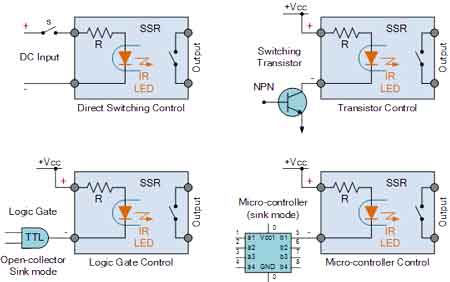New kits turn any car into a plug-in hybrid
By wivb news 4
NFPA 70b Training - Electrical Maintenance
Our customized live online or in‑person group training can be delivered to your staff at your location.

- Live Online
- 12 hours Instructor-led
- Group Training Available
Auto manufacturers are at least a year or two away from launching the next generation of hybrids, called plug-in hybrid electric vehicles (PHEVs), that recharge by plugging into a wall outlet. But battery companies are ready to start selling aftermarket kits within the next few months that convert hybrids, and in some cases regular vehicles, into plug-in electric cars.
A123Systems, an automotive technology company and battery supplier based in Watertown, Mass., is now taking orders on its website for a Hymotion L5 conversion kit, which turns a Toyota Prius into a plug-in electric car. The kit works with Prius model years 2004 through 2008 and adds a special, range-extending lithium-ion battery to the Prius' existing drivetrain.
Using A123's plug-in system, the Prius, which normally runs only short distances at slow speeds on electric power alone, will have added battery power to extend its electric-only range and boost gas mileage to more than 100 miles per gallon. The Prius normally gets an estimated 46 mpg in combined city/highway driving.
Even if electricity costs as much as 15 cents per kilowatt hour, fully charging the 5 kilowatt-hour battery to run up to 40 miles would cost less than a dollar.
The Hymotion L5 kit, due this fall, costs $9,995 plus a $400 destination fee and includes a three-year warranty and installation at an authorized dealer. Buyers must put down a $1,000 deposit on A123's website and the company schedules a date to install the kit at one of the dealers, which currently include Westboro Toyota in Boston, Fitzgerald Toyota in Washington, D.C., Denny Hecker Automotive Group in Minneapolis, Minn., Toyota of Hollywood in Los Angeles, Green Gears/Pat's Garage in San Francisco, and Green Car Company in Seattle. A123 expects to add more authorized dealers.
In late August, Poulsen Hybrid, based in Shelton, Conn., and run by Ulrik Poulsen, CEO of Bridgeport Magnetics, plans to offer a $7,000 conversion kit that turns any conventional car into a plug-in hybrid electric vehicle by mounting small electric motors onto the rear wheels. The Poulsen system also uses a lithium-ion battery pack and will double a car's gas mileage, says Poulsen, the system's creator. The company hasn't released data on how far the system will go on a single charge, but charging it would also cost less than a dollar, he says.
The company's website says owners can install the Poulsen Hybird conversion kit themselves in about 3 or 4 hours. But Poulsen is working to set up a network of authorized installers, which will market the kit and install it for an estimated fee of around $500 to $600. Poulsen hopes to have at least four authorized installers by the fall, including ones in California, Florida, Washington and possibly Connecticut.
VS Composites' $4,000 Electrocharger, due in 2009, also works with any conventional car, including ones whose engines have a turbocharger or supercharger - good news for car enthusiasts, who seek out such engines for the added power and acceleration they bring. The Electrocharger improves fuel economy in city driving by almost 60 percent by replacing a vehicle's alternator with an electric generator, says Michael Van Steenburg, of VS Composites, based in Selma, Texas. Although the Electrocharger will be cheaper upfront than the Poulsen plug-in hybrid system, it will cost from $3 to $5 to juice the Electrocharger for a 50-mile range.
The Electrocharger can be installed by any mechanic, Van Steenburg says. "The connectors are color coded and unique for each connection. Our plan is to work with licensed installers who have been educated on all aspects of the system. Since installation takes about 3 hours, most professional service shops would charge about $180 to $225 for the install."
Any plug-in hybrid, whether created using an aftermarket conversion kit or built by a major automaker - like General Motors' Saturn Vue Hybrid expected for 2009, and Chevrolet Volt expected in 2010 - would cost roughly 2 cents per mile to run, compared with about 10 cents per mile for a traditional car, says Philip Gott, director of automotive consulting at research firm Global Insight.
It would take 8 years to pay off the $10,000 premium of an electric system driving 40 miles a day and saving 8 cents per mile, Gott says, which is longer than most people want to own a car. "But people buy these things to make an environmental statement," he says.
One concern for the conversion kits is their reliability and whether they would void a vehicle's original factory warranty. In this regard, plug-in hybrids built by automakers are a safer bet than conversion kits, Gott says. "Typically, kits don't have a national service and infrastructure."
Toyota, which has announced plans to bring plug-in electric vehicles to market by 2010, is skeptical of the conversion kits. "While A123's test results sound encouraging, we are still concerned that a conversion of this type may push some components beyond their design parameters or cause other parts or systems to fail," says Bill Kwong, a Toyota spokesperson. "We don't know if occupant safety may be compromised by the modifications."
Auto analyst Art Spinella, of CNW Marketing Research in Bandon, Ore., expects half of the aftermarket plug-in electric conversion kits will have problems. "And it's not so much the hardware that makes it expensive, it's the complexity," he says. "We really don't know yet all the ramifications of plug-in hybrids. At this point, for the most part, plug-in hybrids are nothing more than a curiosity for most consumers."
That said, Spinella expects the cost of plug-in hybrid technology, whether as part of aftermarket conversion kits or factory-original vehicles, to go down in a few years. "Look at the computer industry. Now you can get a computer for $349 that used to cost $3,000," he says. "Initially, the market is going to wind up being early adopters - people who will buy a plug-in conversion kit because it's the latest and greatest."
But whether you choose to buy a plug-in hybrid straight from an automaker in a couple of years or opt for a plug-in conversion kit this fall, certain benefits are guaranteed. "You're diverting your energy demand to that produced by a centralized facility monitored for emissions or performance, as opposed to a regular car that owners don't necessarily maintain as well," says Global Insight's Gott. "The electric power grid's energy comes from coal, nuclear, wind, hydro and solar energy."
By relying on electricity from a power plant rather than gasoline from a pump, "within a more reasonable time frame, you will continue to be upgraded to the most modern fuel technologies," Gott says.















